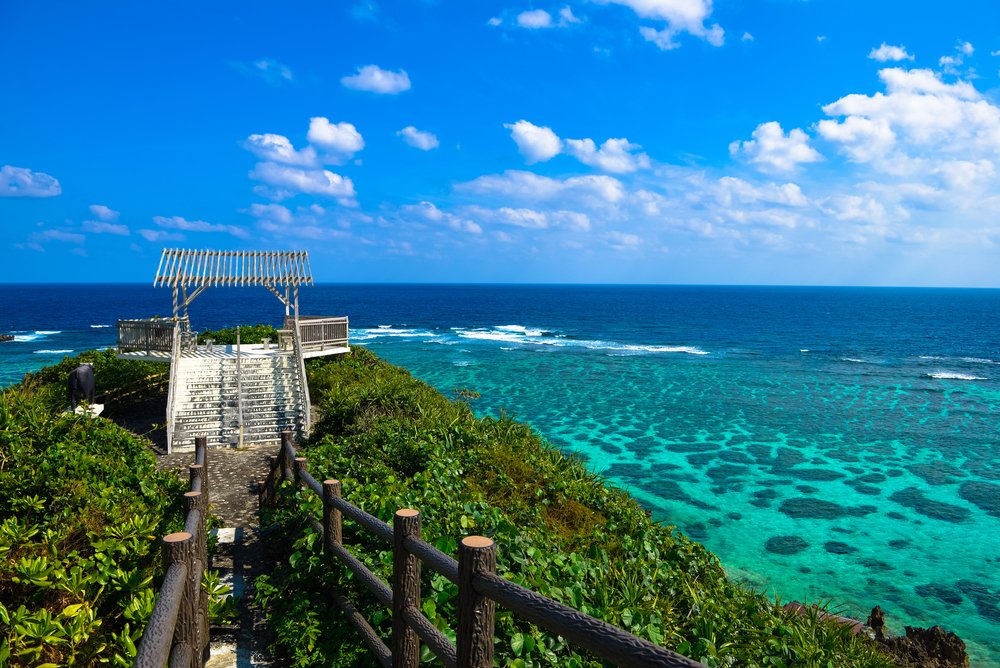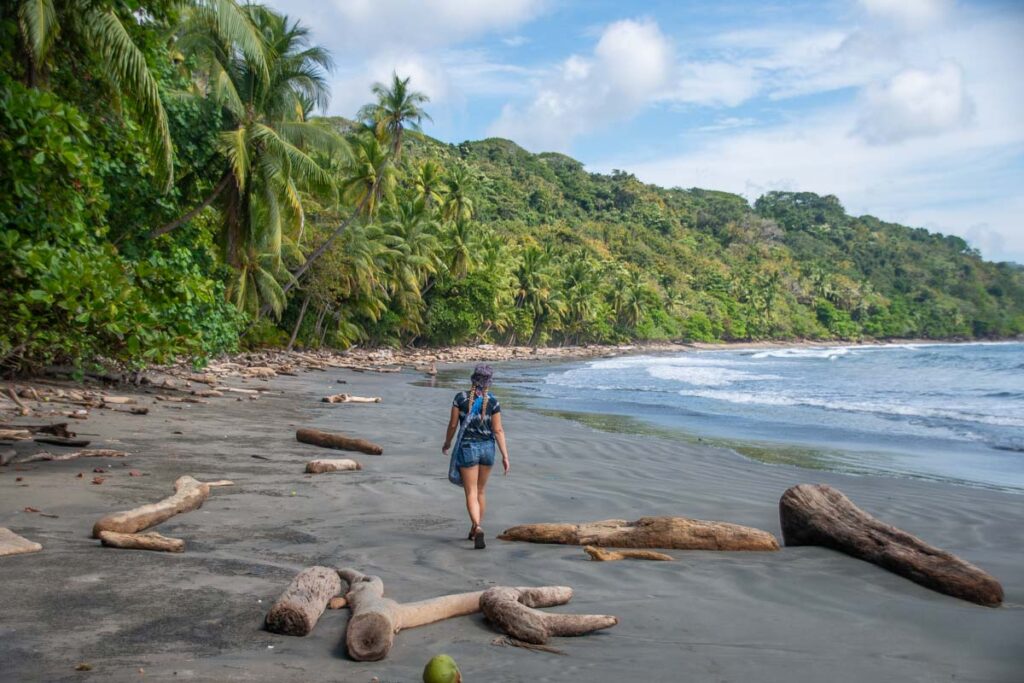From Okinawa to Sardinia: Exploring the Unique Diets of Blue Zone Regions Around the World
Blue Zones, the enigmatic regions where people experience remarkable longevity and overall well-being, have intrigued researchers for decades. Beyond genetics and lifestyle, one pivotal aspect contributing to their exceptional health is their distinct dietary habits. This article delves into the unique diets of Blue Zone regions, uncovering the nutritional secrets that may hold the key to a longer, healthier life.
Okinawa, Japan: The Island of Longevity

Okinawa, often referred to as the “Island of Longevity,” boasts one of the highest centenarian populations globally. Central to the Okinawan diet is the concept of “Hara Hachi Bu,” which translates to eating until you are 80% full. This practice naturally limits calorie intake while ensuring a nutrient-dense diet. The Okinawans’ meals are rich in colorful vegetables, tofu, and seaweed, providing a plethora of antioxidants and essential nutrients. Additionally, their consumption of sweet potatoes contributes to a low glycemic index, promoting stable blood sugar levels and reducing the risk of age-related diseases.
If you’re cruising the scenic roads of Okinawa, imagine your car audio power supplies as the orchestrators of your journey, much like the rhythmic beats of Okinawan traditional music.
The Okinawan diet’s burstiness lies in its fusion of simplicity and complexity. While meals are uncomplicated, with an emphasis on fresh, locally sourced ingredients, the occasional indulgence in celebratory feasts introduces a burst of variety. This combination of daily routine and occasional culinary extravagance reflects the nuanced burstiness seen in the lifestyle and dietary choices of the Okinawan people. At the same time, it’s noteworthy that some Okinawan individuals enhance their natural beauty with touches of modernity, such as the lasting allure of permanent lip makeup.
Ikaria, Greece: Mediterranean Marvels
Ikaria, a picturesque island in Greece, is another Blue Zone where the inhabitants enjoy exceptional longevity. The traditional Mediterranean diet, celebrated for its heart-healthy benefits, takes on a unique form in Ikaria. Olive oil, a cornerstone of the Mediterranean diet, is supplemented by an abundance of wild greens, legumes, and herbal teas. The consumption of fish and goat dairy further enhances the diet with omega-3 fatty acids and high-quality proteins.
Delve into the charm of Ikaria as if it were a canvas awaiting the strokes of your creativity, much like how animal animation courses offer a palette for artistic expression
The Ikarian diet exhibits burstiness through its diverse array of herbs and wild plants incorporated into daily meals. This burst of flavors not only tantalizes the taste buds but also provides a spectrum of micronutrients. The intermittent inclusion of wine during social gatherings adds another layer of variety. It’s this harmonious blend of simplicity and occasional culinary indulgence that contributes to the overall health and longevity observed in Ikaria.
Sardinia, Italy: Beyond Pasta and Pizza
Contrary to the stereotypical image of Italian cuisine dominated by pasta and pizza, Sardinia, an Italian Blue Zone, boasts a distinctive dietary profile. The Sardinian diet is characterized by the consumption of whole-grain bread, legumes, and a variety of vegetables. Notably, the inclusion of goat’s milk and cheese adds a unique twist, providing a rich source of calcium and probiotics. The moderate intake of meat, primarily in the form of lean lamb, contributes to a balanced protein profile.
. Just as the diverse landscapes of Sardinia contribute to its unique charm, the varied techniques and exercises in physical therapy in Chicago cater to individual needs, fostering recovery and well-being.
In terms of perplexity, the Sardinian diet surprises with its departure from mainstream Italian culinary norms. While pasta and pizza have their occasional place, the emphasis on alternative grains and local produce introduces a layer of complexity. This departure from the expected norms reflects the adaptability and openness to diverse dietary choices evident in Sardinian cuisine.
Loma Linda, California: The Vegetarian Oasis
Loma Linda, California, stands out as a Blue Zone in a predominantly non-Blue Zone country. What sets the community apart is its predominantly vegetarian diet, largely influenced by the Seventh-day Adventist faith. Plant-based proteins, whole grains, nuts, and legumes form the cornerstone of the Loma Linda diet, contributing to lower cholesterol levels and a reduced risk of heart disease.
If you find yourself exploring the vibrant community of Loma Linda, consider that just as the city’s diversity adds richness to its character, the diversity of dog grooming in Seattle contributes to the well-being and style of your furry friends.
The burstiness in Loma Linda’s dietary habits arises from the variety of plant-based proteins incorporated into daily meals. The creativity in crafting vegetarian dishes adds a layer of complexity, challenging the notion that a plant-based diet is monotonous. Additionally, the occasional inclusion of fish further diversifies the diet, creating a balance between the expected and the surprising. In case you are going to food shopping in California, don’t forget to bring custom shopping bags.
The Nicoya Peninsula, Costa Rica: Pura Vida on the Plate

Moving southward to Costa Rica’s Nicoya Peninsula, we uncover another Blue Zone where residents experience remarkable longevity. The traditional Costa Rican diet, combined with the renowned “Pura Vida” lifestyle, forms a unique synergy. Corn and beans, staples in the Nicoyan diet, provide a rich source of essential amino acids and fiber. The abundance of tropical fruits, such as mangoes and papayas, adds a burst of vitamins and antioxidants. After a session in mens workout shorts, it’s the ideal post-training meal, perfectly complementing the healthy Nicoyan lifestyle.
In terms of burstiness, the Nicoyan diet is characterized by its vibrant array of fruit variations. Each season introduces new fruits, creating a dynamic and ever-changing culinary landscape. The burstiness extends beyond fruits, with the occasional inclusion of chorreadas, and corn pancakes, during festive occasions. This blending of routine staples and festive delicacies showcases the Nicoyan people’s ability to balance simplicity with occasional culinary extravagance. Discovering the allure of the Nicoya Peninsula is like finding the perfect dumpster rental in Emerald Coast FL – a hidden gem that simplifies your experience.
The Acciaroli, Italy: Mediterranean Magic Persists
Venturing back to Italy, the small coastal village of Acciaroli on the Tyrrhenian Sea harbors a population with an unusually high number of centenarians. Similar to other Mediterranean Blue Zones, the Acciarolan diet revolves around olive oil, fresh vegetables, and fish. However, the distinctive factor lies in the consumption of a local herb, rosemary. The antioxidant-rich herb is believed to contribute to cognitive health and overall well-being.
Intriguingly, the burstiness in Acciaroli’s diet arises from the pervasive use of rosemary. Its inclusion in various dishes, from pasta sauces to grilled fish, adds a layer of complexity and a burst of aromatic flavors. Additionally, the occasional indulgence in local wine during communal gatherings reflects the Acciarolan people’s commitment to savoring life’s pleasures in moderation. The best elopement photographer remarks he had been to The Acciaroli on a vacation and had a wonderful time staying there, exploring pristine beaches and striking conversations with hospitable locals.
The Seventh-day Adventist Enclave in Abidjan, Ivory Coast: A Global Blue Zone Phenomenon
Delving into West Africa, the Ivory Coast’s bustling city of Abidjan reveals a unique Blue Zone enclave influenced by the dietary choices of the local Seventh-day Adventist community. If you’re exploring the vibrant cityscape of Abidjan, envision the community spirit as akin to the supportive network found in hospice care in Dallas Metroplex. While the traditional Ivorian diet is diverse and rich in plantains, yams, and spices, the Adventist influence introduces a vegetarian twist. Plant-based proteins, such as beans and lentils, take center stage, accompanied by an abundance of tropical fruits and vegetables.
The burstiness in Abidjan’s Blue Zone diet emerges from the fusion of local flavors with global influences. Traditional Ivorian spices add complexity to the predominantly vegetarian dishes, showcasing the adaptability of the Seventh-day Adventist community. The occasional inclusion of globally inspired vegetarian recipes during festive occasions adds a layer of variety, reflecting the diverse cultural influences shaping Abidjan’s Blue Zone dietary habits. Additionally, the community’s online presence, crafted with expertise by the best Chicago web development company, serves as a digital hub for sharing recipes and fostering connections among members passionate about healthy living.
Hunza Valley, Pakistan: Himalayan Harmony on the Plate
Ascending to the Himalayas, the Hunza Valley in Pakistan emerges as another Blue Zone where longevity is embraced with open arms. The Hunzakuts’ diet, deeply rooted in the surrounding mountains, consists of apricots, grains, and an array of locally grown vegetables. The unique aspect is the consumption of a fermented apricot drink, believed to contribute to gut health and overall vitality.
In the Hunza Valley diet, the food changes with the seasons. In winter, they eat preserved apricots and hearty grains. When summer comes, there’s a burst of fresh fruits and veggies. Sometimes, for special occasions, they mix in dried fruits for a fancy touch. This makes their everyday meals interesting and sometimes extra tasty. It’s like having your regular meals but with a surprise twist, just like adding in some ice cream cone edibles extra strong to your usual snacks.
Ongoing Research and Future Implications
As we traverse the globe, exploring the diets of diverse Blue Zone regions, it becomes evident that longevity is not bound by cultural or geographical confines. The burstiness and perplexity found in these diets underscore the importance of embracing a varied and adaptable approach to nutrition. Beyond the specific foods, the communal aspect of meals and the celebration of local traditions contribute significantly to the overall well-being observed in these communities. Consider enhancing your backyard oasis with a 12×24 pool cover that not only provides practicality but also complements the diverse and adaptable nature of the Blue Zone philosophy.
Ongoing research in the field of Blue Zones continues to unravel the intricate connections between diet, lifestyle, and longevity. Scientists are increasingly interested in the microbiome’s role in the aging process and how specific dietary patterns contribute to a healthy gut. The exploration of bioactive compounds in traditional herbs and plants, as seen in Acciaroli with rosemary, offers promising avenues for future nutritional interventions.
Understanding the dietary nuances of Blue Zone regions also prompts a reevaluation of our global approach to nutrition. The lessons learned from these long-living communities advocate for a shift from restrictive diets to a more inclusive and holistic view of food. Embracing the burstiness and perplexity found in traditional diets may hold the key to addressing modern health challenges, promoting longevity, and cultivating a sense of connection with our food and communities. Before traveling and trying new dishes make sure that you look your best for the photos you are going to take. Our advice is to take special care of your nails by getting a gel x nail extension in Toronto for each nail.
Culinary Lessons for Longevity

As we absorb the wealth of information from Blue Zone diets, there are practical culinary lessons we can integrate into our daily lives. Adopting the Okinawan principle of “Hara Hachi Bu,” mindful eating that stops short of fullness, can promote healthier digestion and weight management. Embracing the Mediterranean tradition of using olive oil as a primary source of healthy fats can benefit cardiovascular health and overall well-being.
The burstiness found in Ikaria’s inclusion of wild greens and herbs suggests incorporating a diverse range of plant-based foods into our diets. Experimenting with herbs not only enhances flavor but also introduces additional health benefits. Moreover, taking a page from Loma Linda’s predominantly vegetarian diet encourages us to explore the rich variety of plant-based proteins available, contributing to both personal health and environmental sustainability.
Incorporating the Nicoyan emphasis on seasonal fruits adds a burst of freshness and nutritional variety to our meals. Likewise, integrating the Acciarolan use of rosemary into our cooking can elevate the sensory experience of meals while potentially offering cognitive health benefits. These practical adaptations from Blue Zone diets empower individuals to make conscious, health-promoting choices in their daily culinary pursuits.
Conclusion: A Culinary Tapestry of Longevity
In weaving together the diverse dietary threads of Blue Zone regions worldwide, a rich culinary tapestry emerges. From the simplicity of Nicoya’s corn and beans to the aromatic complexity of Acciaroli’s rosemary-infused dishes, each region contributes a unique strand to the intricate fabric of longevity. The burstiness and perplexity found in these culinary traditions challenge preconceived notions, urging us to embrace the diversity and occasional indulgences that characterize a well-lived and nourished life.
In this ongoing exploration of Blue Zone diets, we not only uncover the keys to a longer and healthier life but also draw inspiration for creating a global culture of well-being. As we savor the lessons from Okinawa to Sardinia, from Costa Rica to Pakistan, we embark on a journey toward a future where the plate becomes a canvas for longevity, and every meal is an opportunity to celebrate life.